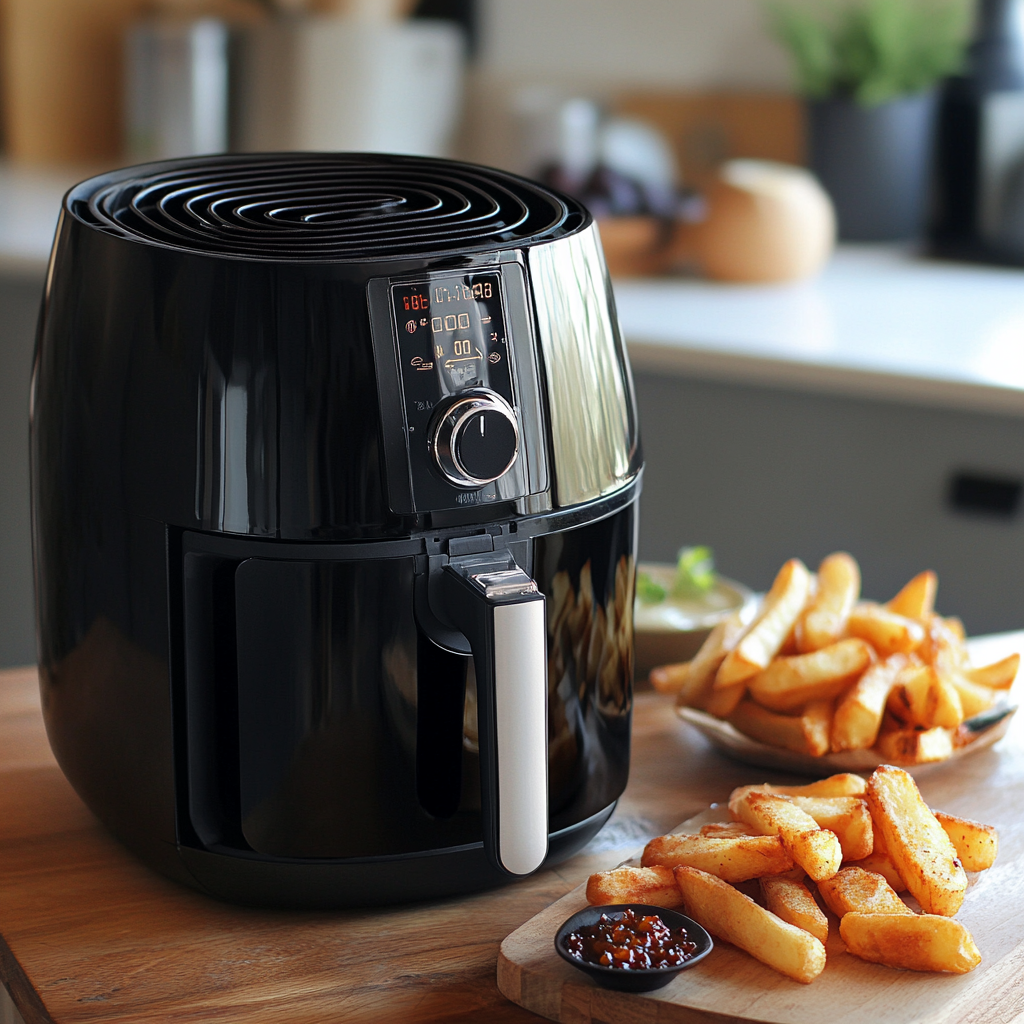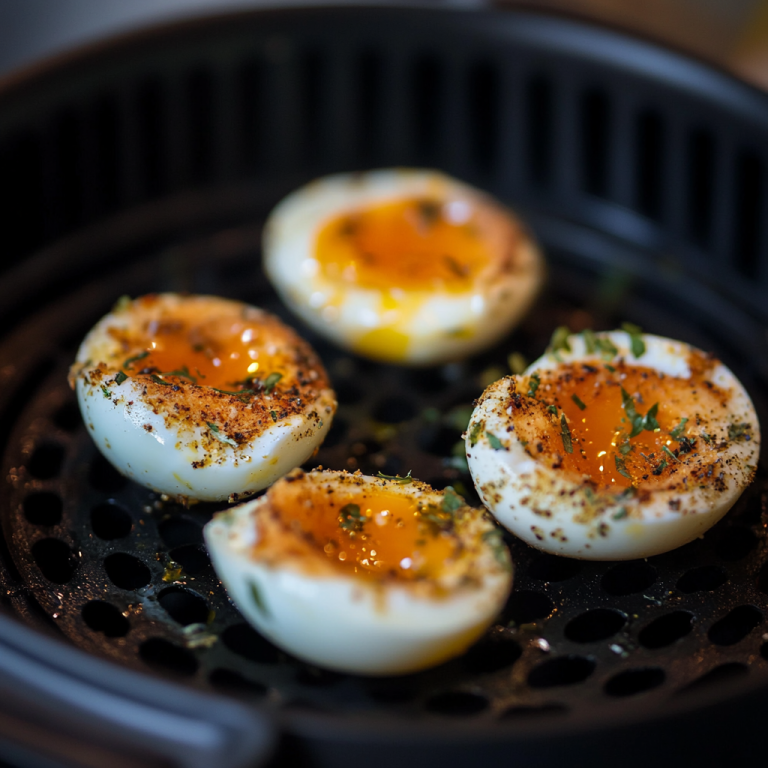Air Fryer Temperature Conversion: Quick Guide For Perfect Results
Air fryers have become popular, offering a healthier alternative to traditional frying with crispy results. However, understanding how to master air fryer temperatures can be tricky. This guide covers everything you need to know, from how air fryers work to converting standard oven temperatures. Handy tips for adjusting cooking times, specific temperature recommendations for popular recipes, and common mistakes to avoid are included. Whether you’re a seasoned chef or just starting, this information will help you unlock the full potential of your air fryer.
Understanding Air Fryer Temperature
Understanding air fryer temperature is essential for optimising cooking efficiency and ensuring food safety. Air fryers operate on the principles of convection cooking, where hot air circulates around the food, producing a crispy texture without the necessity for excessive oil. To achieve optimal results, it is imperative to comprehend the various temperature settings and how they compare to traditional cooking methods. This guide will explore the intricacies of air frying temperatures, including temperature conversions from conventional ovens, and will offer insights on cooking times and heat settings tailored to different types of food.
What is an Air Fryer and How Does it Work?
An air fryer is a widely used kitchen appliance that employs convection cooking to prepare food with significantly less oil than traditional frying methods, often referred to as oil-less frying. This device circulates hot air at high speeds, producing a crispy texture akin to that of deep-fried foods while preserving the nutritional value of the ingredients. In contrast to conventional frying, which often involves submerging food in a substantial quantity of hot oil, thereby increasing fat intake and calorific content, air frying offers a healthier alternative. This technique not only mitigates the risk of harmful trans fats that may develop during traditional frying but also necessitates minimal to no oil, ensuring that meals remain lighter and more nutritious. The rapid circulation technology employed in air fryers accelerates the cooking process, thereby simplifying meal preparation. Consequently, individuals seeking to enjoy their favourite fried snacks can do so with a reduced sense of guilt, making air frying an attractive option for health-conscious cooks aiming to strike a balance between taste and nutrition in their culinary pursuits.
Converting Traditional Oven Temperatures to Air Fryer Temperatures
Converting traditional oven temperatures to air fryer temperatures is crucial for achieving optimal results when preparing your preferred dishes using an air fryer. Although air fryers are designed to cook food more efficiently, understanding the necessary adjustments in cooking temperature is vital for maintaining food quality and ensuring appropriate cooking times. This section will present a comprehensive temperature guide and conversion chart to assist you in effectively adapting your recipes for air frying.
Conversion Chart for Common Oven Temperatures
The conversion chart for common oven temperatures serves as a valuable reference tool to facilitate effective recipe adjustments when using an air fryer. A thorough understanding of these conversions is essential for ensuring that food is cooked to a crisp and delightful finish while minimising the risk of overcooking or undercooking. It is worth noting that many home cooks experience confusion when transitioning from traditional ovens to air fryers, as the differences in cooking methods can significantly impact the final results. For example, an oven set to 200 C typically necessitates a different air fryer setting, often around 190 C, to achieve the same level of doneness. This minor adjustment can not only optimise cooking times but also enhance textures, allowing items such as chips and chicken wings to attain a perfect crunch while retaining moisture. By effectively utilising a conversion chart, individuals can elevate their culinary creations, ensuring consistently exceptional meals that excel in both taste and presentation.
Tips for Adjusting Cooking Times
Adjusting cooking times is an essential skill when using an air fryer, as several factors can significantly influence the outcome of your dishes. Variables such as the type of food, the compatibility of ingredients, and the thickness of the food may necessitate modifications to standard cooking times. This section will present practical cooking tips aimed at helping individuals achieve optimal results during meal preparation.
Factors That Can Affect Cooking Time
Several factors can influence cooking time when using an air fryer, including the type of food, its size, and moisture content. A thorough understanding of these variables can enhance cooking efficiency and ensure that meals are consistently prepared to perfection. For example, denser foods such as potatoes or thicker cuts of meat generally require longer cooking times compared to lighter items like vegetables or fish fillets. Adjusting the temperature can also significantly impact cooking duration; starting the process at a high temperature for searing, followed by a reduction for thorough cooking, often yields exceptional results. The ratios of ingredients are crucial as well; overcrowding the basket can hinder air circulation, resulting in uneven cooking. To achieve optimal results, it is advisable to preheat the air fryer and to shake or turn the food halfway through the cooking process. Recipes specifically designed for air fryers, such as crispy chickpeas or perfectly roasted Brussels sprouts, can be modified to consider these factors, facilitating delightful and consistent outcomes.
Recipes and Temperature Recommendations
Selecting the appropriate temperature is crucial for the success of air fryer recipes, as it directly affects both flavour retention and the crispy texture of the finished dish. This section will offer specific temperature recommendations tailored to widely used air fryer recipes, ensuring that optimal results can be achieved for a variety of meal options.
Specific Temperature Recommendations for Popular Air Fryer Recipes
The following are specific temperature recommendations for popular air fryer recipes, intended to enhance food textures and flavours while ensuring optimal cooking outcomes. These guidelines facilitate the achievement of the desired crispiness, whether one is preparing chicken wings, roasted vegetables, or even desserts such as air-fried doughnuts. For example, crunchy chicken wings are best cooked at approximately 200 C for 25 to 30 minutes, with a recommendation to flip them halfway through to ensure even cooking. When preparing vegetables, a temperature of 190 C for 15 to 20 minutes typically yields satisfactory results. It is also important to note that adjustments in cooking times or temperatures may be necessary depending on the thickness or quantity of the ingredients to maintain accuracy and achieve a tailored flavour. Customisation can significantly enhance the cooking experience, allowing for flexibility based on individual preferences or dietary requirements.
Common Mistakes to Avoid
Avoiding common errors in air frying is crucial for preserving food quality and attaining optimal results. Many home cooks encounter difficulties such as overcooking or undercooking, which can negatively impact the nutritional value and flavour of their dishes. This section will delineate key mistakes to avoid and provide valuable cooking tips to enhance the air frying experience.
How to Prevent Overcooking or Undercooking
To prevent overcooking or undercooking when using an air fryer, it is essential to maintain cooking accuracy and understand temperature settings. This approach ensures that food cooks evenly while retaining its desirable flavours and textures. It is important to pay close attention to the recommended cooking times for specific ingredients, as these can vary considerably. Utilising a reliable food thermometer can assist in determining when dishes have reached the appropriate internal temperature, thereby eliminating guesswork. Additionally, it is advisable to shake or turn the food halfway through the cooking process. This technique promotes even heat distribution and contributes to achieving the ideal crispiness. Consulting temperature guides and noting personal preferences over time can significantly enhance overall cooking techniques, leading to consistently satisfactory results. Finally, consistent practice is key when experimenting with new air fryer recipes.










